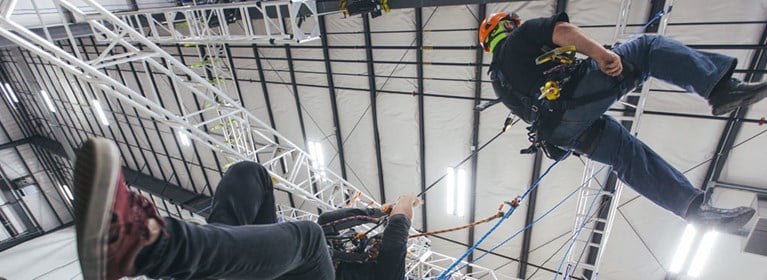Shouldered Eyebolts for Material Handling
Rigging |
By Henry Brozyna |
Oct 20, 2010
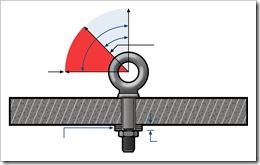
Eyebolts are safe to use if used properly.
I have seen the misuse of eyebolts in every walk of life – industrial, recreational & residential – and it is frightening. I have seen eyebolts used in rigging applications, carrying large loads, being used incorrectly; they are sometimes used on pick-up trucks as attachments for safety chains on trailers.
Very easily acquired, most eyebolts can be purchased at local hardware stores. Often overlooked is the working load limit (WLL) and the angle at which the eyebolt will be loaded. This will be the angle at which the load will exert tension on the eyebolt in relationship to the threaded shaft.
The angle is very critical.
During a true straight vertical pull inline with the threaded shaft, there is no reduction in WLL. Once you start to deviate from “True Vertical” (see chart below) the WLL decreases dramatically.

The other item that people neglect is the orientation of the eye itself to the line of tension.
The eye needs to be in the line of pull. Whatever sling medium you use, the sling leg needs to be parallel to the eye of the eyebolt.
When installing an eyebolt in a tapped hole be sure that the thread engagement is at least 1-1/2 times the bolt diameter of the eyebolt. Also, when using shouldered eyebolts, make certain that the shoulder is in complete contact with the surface being lifted. Non-shouldered eyebolts are NOT to be used for angular lifts (Ref. ASME B30.26)
Hoist rings are an alternative to eyebolts in that hoist rings can swivel 360o without losing any working load limit, allowing the bail of the hoist ring to be in line with the line of tension. Check back in a couple of weeks for a follow-up post on hoist rings!
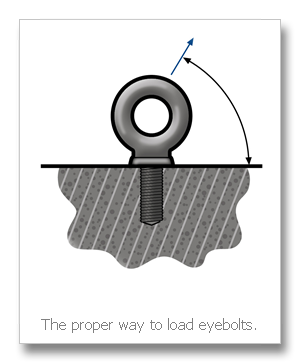
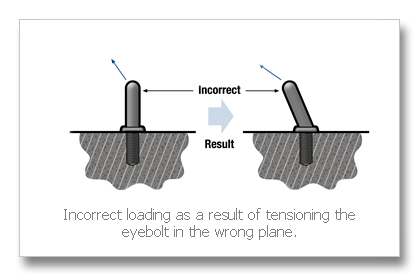
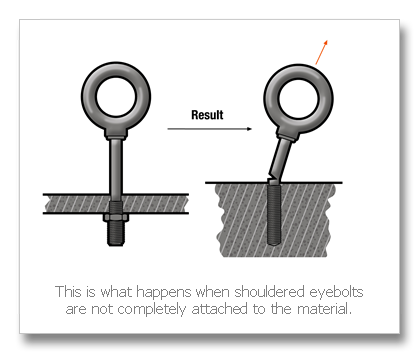
Want to learn more? View our recent safety webinar:
“Safe Use of Lift Points: Eyebolts, Swivel Hoist Rings & Clamps.”
North America - EN




